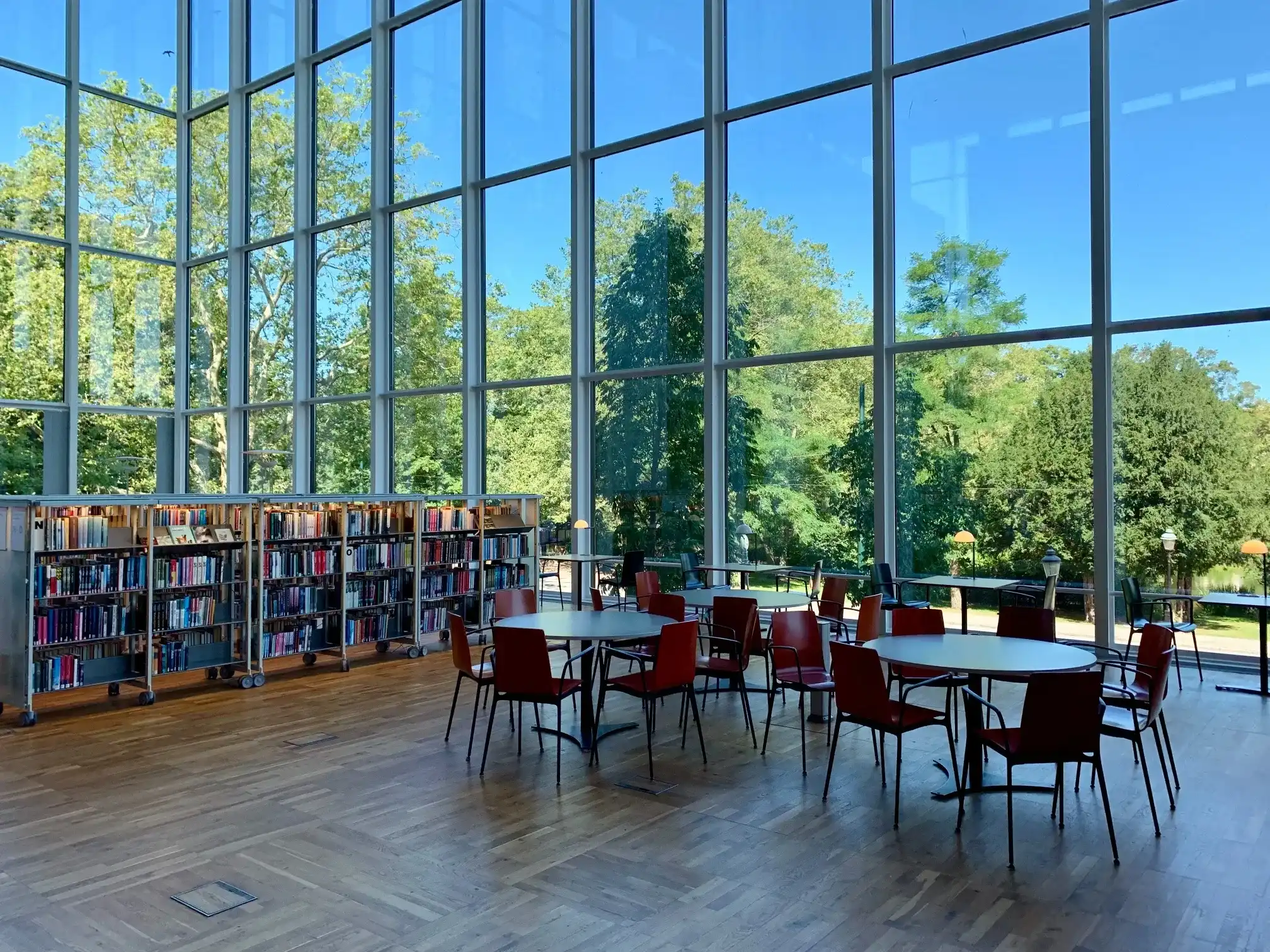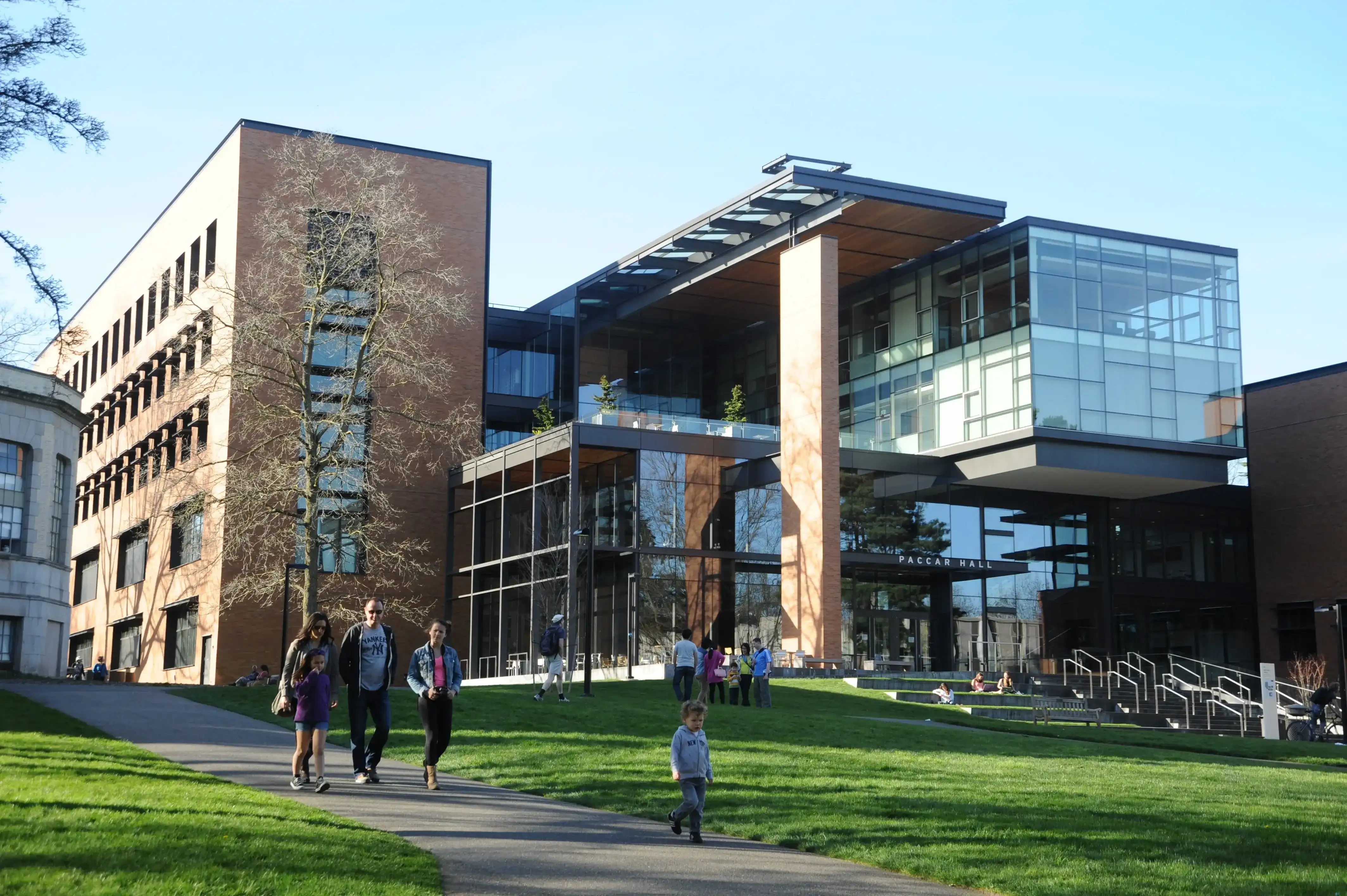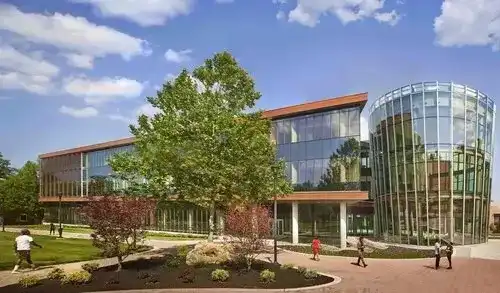Geo-targeting students: location-based marketing for colleges & universities
Let’s delve into location-based marketing for colleges and universities. The benefits, applications, and how Mappedin can help you get started with this digital strategy.
What is location-based marketing?
Location-based marketing is a tactic that uses a person’s physical location to target them with personalized messages. Using real-time location data, marketing teams can reach an identified market based on their proximity to a campus location, events happening within their area, and more. For instance, you could target mobile app users and motivate them to make purchases at nearby food vendors or bookstores. Similarly, a business school may advertise their marketing programs and on-campus career opportunities that would entice applicants.
How does location-based marketing work for colleges & universities?
Using indoor positioning, colleges and universities can target a person based on their current location. There are a variety of technologies that can be used, including beacons, wi-fi, RFID, and geomagnetic, to understand this real-time position as people navigate through campus. To execute a successful location-based marketing strategy, there are two key requirements. The first is an understanding of a person’s real-time location through positioning layered with a digital venue map, and the second is that users must opt-in to receive notifications.

Why should colleges & universities use location-based marketing
Location-based marketing is a powerful strategy for marketing teams to gain the attention of campus visitors, promote events and services, encourage purchases, and increase student engagement and retention. Whether you want to build brand awareness, promote offerings, or use this tactic to improve recruitment efforts, location-based marketing can be an invaluable tool for your marketing plan.
The benefits of location-based marketing for college student recruitment
Location-based marketing is an effective way to attract prospective students to your college or university. Students that visit a predetermined boundary around a location (also known as a geofence) can be sent personalized messages and offers related to your campus. If someone visits a recruitment fair, student orientation seminar, or a range of campus information sessions, they can receive ads that line up with their interests. For instance, an international student can be targeted with information about study abroad programs and admission requirements.
Provide more personalized messages
With location-based marketing, colleges and universities can better understand their target audiences, segment them, and send highly relevant and personalized messages to them. With tailored campaigns, people can avoid filtering through irrelevant content and better connect with your messaging. Sending well-timed information, updates, or deals enables you to target your audiences and provide lasting impressions.

Reach new locations with greater ease
A huge advantage of using this digital marketing strategy is that you can get your messages across different audiences with greater ease. You can reach individuals in specific areas such as campus buildings, bookstores, dining areas and restaurants, or nearby high schools to appeal to prospective students. One area may have different demographics than another area, and you can use this data to trigger notifications that are extremely relevant.
Retain a competitive advantage
To retain a competitive advantage over other schools, you may decide to put a geofence around other campuses to reach their audiences. This messaging could include a call-to-action to schedule a campus tour, information about the admissions process and ease of transferring to your campus, the abundance of career opportunities, and more. As an effective marketing strategy, this tactic can grasp the attention of undecided students or existing students that are looking to transfer schools.
Increase your local relevance
Increasing your local relevance is important because the campus of choice for many students is the one closest to home. Consistent communication strategies can help pull in local students by targeting them with messaging about the academic programs, tuition amounts, sports teams, or perks of attending your school. You can also highlight your best-ranked college courses, university courses, or elective courses. This content can drive additional interest and boost recruiting efforts.

How colleges can effectively use location-based marketing
College and university operators can use location-based marketing strategies to ensure their institution’s offerings stay within arm’s reach. Highlight advertisers, fundraising events, academic opportunities, career options, and any information that is relevant to your target audience. With digital mapping solutions, take this experience to the next level by showcasing events and promotions in real-time on the campus map. For instance, you can use this technology to highlight the location of time-sensitive events and relay this information to students and staff relevant to their location. If someone is passing by a job fair, you can send them a personalized notification about employment opportunities and guide them directly there.
How to choose the best location-based marketing System for colleges & universities
There is a wide range of software companies that offer location-based marketing systems. Here are some things to consider when choosing the right one for your college or university:
- Identify a target audience within specified geographic boundaries through the use of geofencing, wi-fi, beacons, or a similar geotargeting technology
- Provide a platform that includes communication tools to deliver scheduled, targeted, and automated messages based on their location
- Provide analytics or a dashboard to analyze proximity-based marketing campaign metrics and performance
- Allows customers to opt-in and out of marketing communications and updates distribution lists automatically for the Marketing team
What sets MappedIn apart?
Mappedin has worked with large educational institutions such as Mohawk College and uOttawa to provide enhanced campus experiences using digital directories, indoor mapping, wayfinding, and analytics.

The Mappedin platform enables colleges and universities to build editable digital maps and promote ongoing news, events, and safety bulletins. To implement location-based marketing strategies, one of the first steps is to create a visualization of the college or university. By combining precise location data and a digital map, operators can better understand foot traffic, how people move through the school, as well as how to use this information to improve the campus experience.
There are three key components required to build a proximity marketing experience: the advertising content, positioning, and the digital map. Mappedin’s blue dot navigation feature takes care of the second piece for marketers hoping to target students and visitors.
Location-based marketing for colleges & universities FAQs
How can universities use location-based marketing?
Colleges and universities can use location-based marketing by analyzing data from a range of integrated digital tools to find insights into visitors and offer them a personalized campus experience. Some insights can include their demographics, areas with increased foot traffic and most popular location searches.

What is geofencing used for?
Geofencing refers to drawing an area around a location, or locations, where an audience visits in order to serve them real-time ads and content. It is used to send targeted messages to mobile device users when they enter the predetermined area. Any business with a physical location is the best fit for location-based marketing because of its ability to geofence and geotarget certain areas. Some of these industries include colleges and universities, airports, retailers and shopping malls, grocery stores, and stadiums.
What is the best way to market to college students?
Colleges and universities must embrace a marketing communication plan that can increase visibility and student engagement. Location-based marketing paired with a digital mapping solution revolutionizes the campus experience and makes it easy for students to discover all that your college or university has to offer. Mappedin’s mapping solutions for colleges and universities enable students to search and navigate the campus with ease. Combined with the ability to send push notifications, school operators can serve up highly relevant content and personalized messaging to students and visitors as they navigate within and between buildings. Contact us today to get started.
Tagged In
Share



